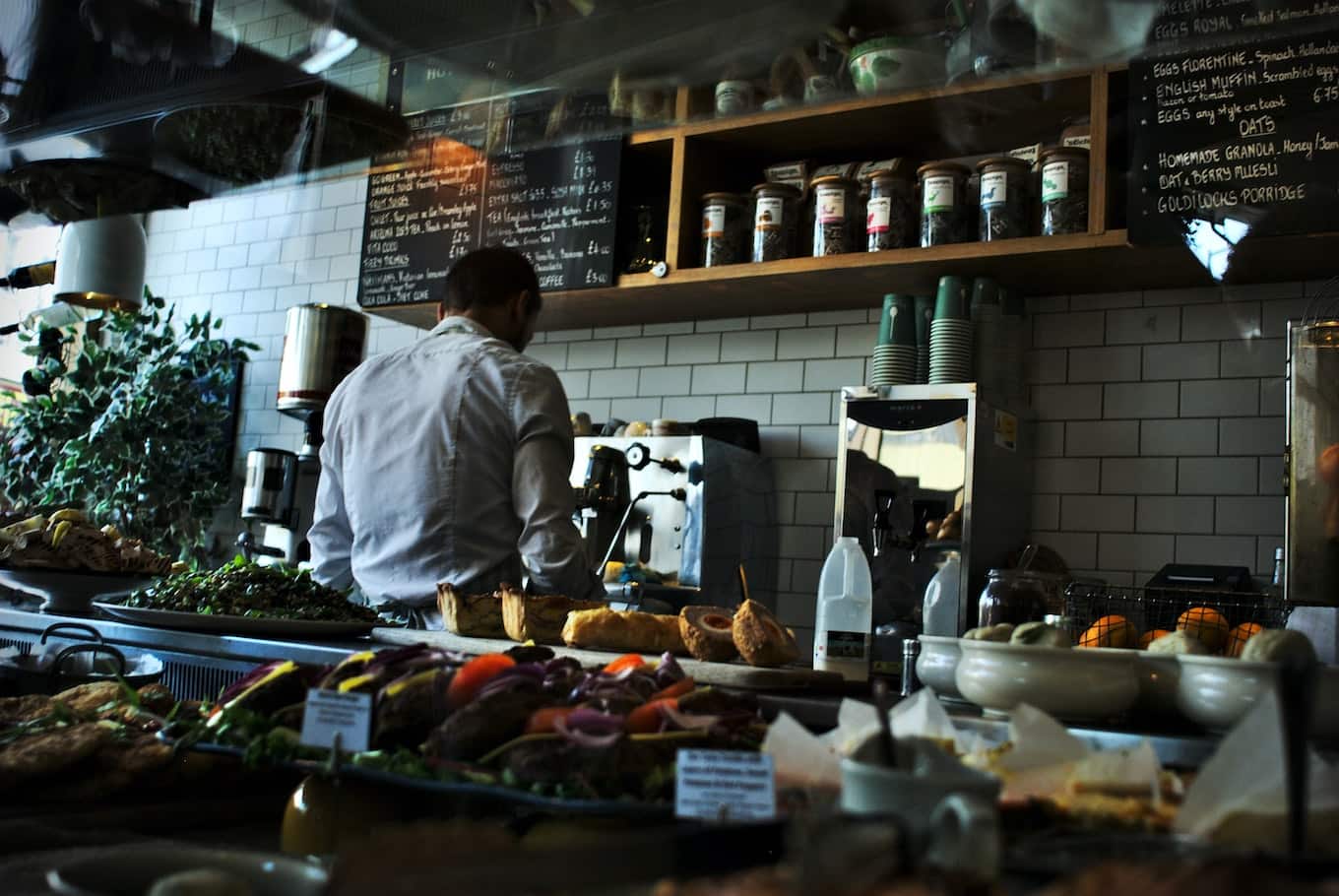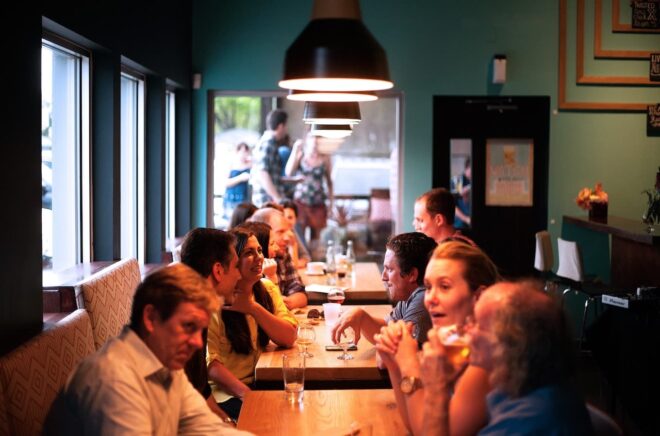COVID-19 Restaurant Survival Guide
Editorial Team
9 min read
Restaurants are among the many small businesses struggling during the COVID-19 pandemic. Guests are staying home and meals are mostly takeout: 92% of restaurant traffic is now outside the dining room, with most states banning in-restaurant dining altogether. We’re facing a long road back “to business as usual,” but there are things your restaurant can do to support your community, care for your employees, and keep the lights on.
Shift your mindset
Before you try to rethink your restaurant workflow, you may need to redesign your mental model. We explored this topic in a recent blog article, but the basic idea is to examine your priorities and set clear intentions rather than functioning only in response to emerging problems or concerns. Running a small business is tough even in ordinary times. Find that conviction, resilience, and strength that brought you to this point. Small business owners are the bedrock of our communities: your family, your employees, and your neighbors will look to you for leadership.
Rethink your menu and service offerings
The next step is to find creative ways to use what you have. How can you reimagine your offerings to sustain income while serving your community? Here are some ideas to get you started.
- Offer family-style menus…
Modify your menu to offer dishes that travel well, are full of long-lasting ingredients reliably available from your suppliers, and feed a full family. Some restaurants publish a new daily menu each morning to provide options based on ingredient availability. Others are creating freezer-friendly packaging for dishes that are able to be enjoyed later. It’s also helpful to include enough food for leftovers—with reheating instructions of course—as many people are working from home and will need lunch the next day. Specify how many portions come with each dish to help customers assess how much to order. - …and group-sized drinks
Many states are relaxing their alcohol laws during the COVID-19 crisis. New York, New Hampshire, Maryland, Illinois, California, and Texas are just a few places that have all temporarily changed their regulations to allow alcohol delivery, giving restaurants a way to replace lost revenue. Partner with a brewery or alcohol vendor to offer growlers of beer to go. Pair bottles of wine with meals, or pre-mixed margaritas or sangrias with tacos. Alcohol is a great way to increase your restaurant margins and complete a meal for guests. - Offer specialty pricing for certain groups
Some restaurants are earning goodwill by offering discounts or special menus to laid-off industry workers, medical personnel, and elderly people. Specialty pricing gives you an opportunity to use up perishables or ingredients that don’t fit into a newly modified menu. Clear your fridge responsibly by finding ways to help those in need within your community. - Create make-at-home meal kits
Obviously, you don’t want to give away the secret to your special sauce, or your grandmother’s cookie recipe that keeps customers coming back for more. But restaurants can create build-your-own meal kits that still make it easy for guests to enjoy your signature foods. Help families out by creating an ingredient kit for pizza or cookies complete with toppings or other decorating components—not only are you offering a meal service, but also entertainment for kids cooped up in the house. Try a themed kit: brunch party packs, make your own smoothie kits, or an at-home taco bar. - Sell groceries and pantry staples
For those who want a less crowded shopping experience, restaurants can be a lifeline. Sell groceries, unique gourmet items, and pantry staples that you can source directly from your suppliers to offer an alternative way to get food in the house. Groceries also encourage customers to come back frequently, helping your cash flow.
Pivot to delivery
Official guidelines for staying at home can change by the day. As foot traffic dries up, here are some tactics to continue serving your guests at their homes.
- Switch to online orders or ordering ahead
Pivot to take-out and delivery services to continue serving meals when diners aren’t able to make it to your restaurant. You can ask diners to order meals—especially family-sized portions—at least 24 hours in advance to ensure you’ll have the necessary staff on hand to prepare them. The Clover App Market has many options to get you set up for online delivery and take-out meals: try Chowly, Menufy, or any of the other services. Just enter “delivery” or “food delivery” in the search bar in the upper right. Also, see our recent blog post on how to set up online ordering fast. - Curbside pickup
Curbside pickup is another great option for restaurant guests no longer able to, or choosing not to, dine out. Curbside pickup refers to order pickup by the customer, at the restaurant. Typically the customer will park outside, often in a designated space, while a runner brings the order out to the car. This is where mobile, handheld POS devices—like the Clover Flex—come in very handy.Redesign your take-out protocols to account for customers who won’t be entering your establishment. Encourage repeat visits by adding a “bounce back” card with the take-out meal, offering something special on the customer’s next visit (with a tight expiration date). - Contactless payment
Exchanging payment physically is one of the easiest ways to transmit germs. In the Clover POS ecosystem, all of our devices, including Flex, our mobile POS, have contactless payment built in. Contactless payments are a fast, secure, and hygienic way for your guests to close their tab with a debit card, credit card, or mobile device. Simply tap and go—a great option for curbside or in-restaurant pickup. - Set up an e-commerce site
Set up an e-commerce page or an entire website to give customers a way to order and pay remotely. If you have them, include non-perishable grocery items, like your restaurant’s special sauce, grocery items, or pantry staples, as additional items for sale. Here’s how to set up an e-commerce site that can provide an additional revenue stream for your restaurant.
Financial relief
The COVID-19 crisis has forced numerous restaurants and bars across the country to close or downsize. Below is a list of resources you can explore to help stem the cash-flow drain your business might be experiencing.
- Clover’s financial resources page
- US Chamber of Commerce’s guide to the CARES Act: How to Get a Coronavirus Emergency Loan
- Private partnerships for restaurant owners:
- The James Beard Foundation Relief Fund is offering micro-grants to independent restaurants in need
- The Restaurant Workers’ Community Foundation has a COVID-19 Emergency Relief Fund with zero-interest loans to provide direct relief to individual restaurant workers
- Go Tip ‘Em allows customers to Venmo bartenders around United States while they enjoy a drink at home
- Spill the Dish is a database of financial aid options for restaurant owners and workers organized by state, job position, and with options from government agencies and nonprofits.
- Set up a donation link to a GoFundMe campaign for your employees
New resources for restaurants are coming online regularly, so bookmark this post as well as the Clover financial resources page.
More ways to stay connected
Just as chefs try to make the most of every ingredient at their disposal, so you can see what other aspects of your business might help you weather this crisis. There are numerous ways to connect with your guests. With a little creativity, you can build or strengthen your connection with your community, and in some cases even lower your costs .
- Streamline your hours. Keep costs down by opening only during peak times. We’re seeing some restaurants reducing their hours to 4:30 – 8 p.m. Wednesdays through Sundays.
- Host a cooking class. Have your chef create a video, webinar, or live Instagram video showing at-home cooks how to make some of your favorite dishes.
- Do away with extras. Plastic utensils not only present an additional cost, but they’re also bad for the environment. Skip adding disposable utensils to your take-out orders unless a customer specifically requests them.
- Throw a virtual dinner party. For those who are in solo quarantine, host a virtual hangout so diners don’t have to eat alone. Be sure, however, that the video conferencing platform you’re using has the proper security protocols in place.
- Offer activities for kids. Post fun things for kids to enjoy. For instance, if you’re a seafood restaurant you might think about ocean-themed arts and crafts activities parents can download to keep their kids busy during the lockdown.
Make use of your restaurant’s social media channels and email to stay in touch with customers while your dining room is closed.
Communicate, communicate, communicate
Restaurants thrive first and foremost because of their people. Your team is integral to your success: from your chef and kitchen staff to your hostess and servers, your people make your business. Don’t be afraid to touch on the very real and human side of the COVID-19 crisis when you talk to your staff, suppliers, customers, and the larger community.
Communicate the things you are doing to stay open to your customers and your employees. Transparency is key here: make sure everyone is aware of the steps you are taking to keep everyone safe, from hygiene and sanitation to relief and flexible approaches to work.
Finally, don’t forget that marketing—with an eye toward sensitivity—is still important. Hard sells won’t go over well: many people are struggling economically with the current waves of layoffs. Instead, let your customers know whether or not you’re open, how you’re physically providing meals (through curbside pickup or delivery) and how they can order or support you. This is a time to communicate more, not less.
This is a crisis, but it’s also a challenge, and small business owners are often the first to step up to the plate in times of need. Strategize how you can redesign your menu to make the most of your ingredients, cut down on waste, and support customers stuck at home. Revamp the dining experience. Use your social media channels to create a virtual experience, keep customers connected, and stay in touch as the situation evolves. And don’t forget there are financial relief options out there to support your employees and hold you over until the situation improves.
Check out these web pages on financial relief, business preparedness, and our general merchant resources.
© 2020 Clover Network, Inc.
This information is being presented for informational purposes only and should not be construed as legal, financial, or tax advice. Readers should contact their attorneys, financial advisors, or tax professionals to obtain advice with respect to any particular matter. Clover assumes no responsibility for any information contained on any third-party website.
The Clover trademark is owned by Clover Network, Inc.
Related Posts
Walk-ins or reservations—what’s the right mix for your restaurant?
Full Service Restaurants (FSR)
10 exciting restaurant grand opening ideas
Popular Topics
Stay in touch
Sign up and learn more about Clover.
Thank you for your subscription!
More posts about starting a small business
eBook





